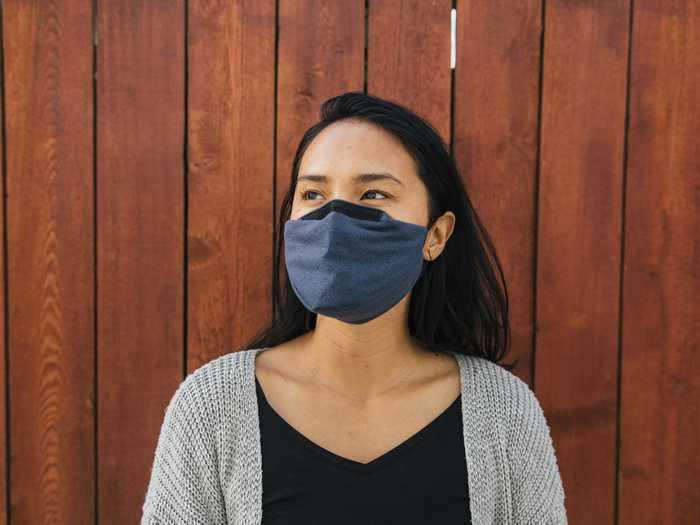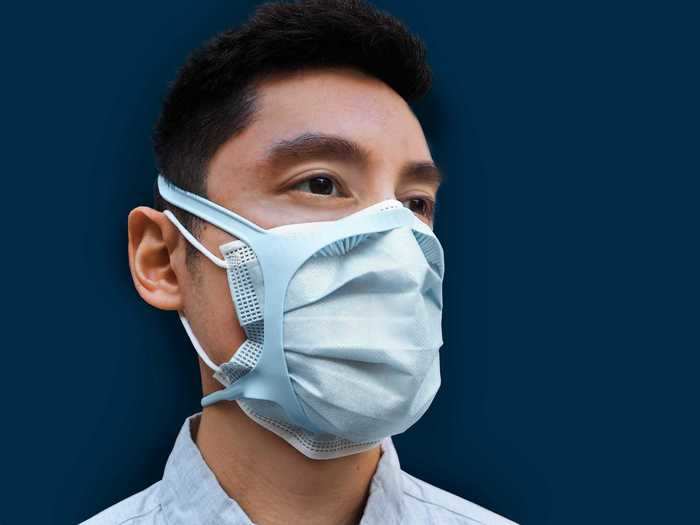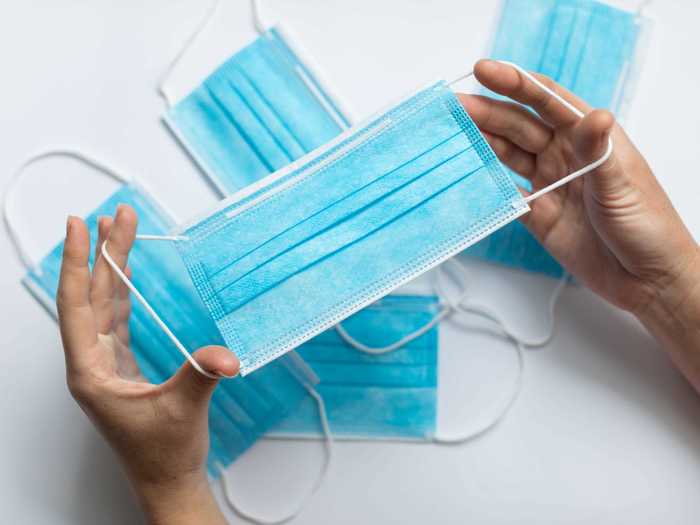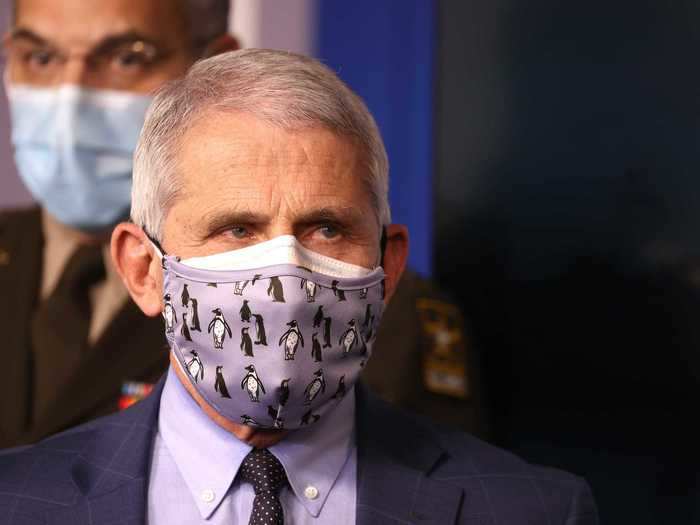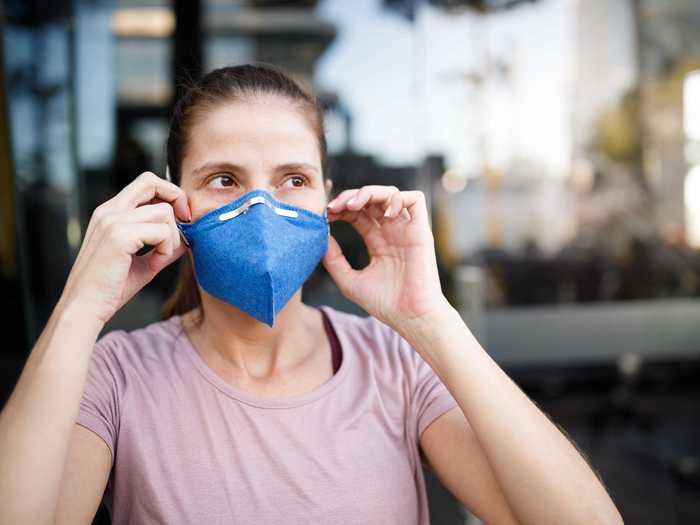Brendan Williams, president of the New Hampshire Health Care Association, puts on a surgical mask while carrying another mask.Charles Krupa/AP Photo
- As new, more infectious variants spread across the US, public-health experts are underscoring the importance of multi-layer, tightly-sealed masks.
- The CDC recently outlined five helpful tricks to make masks more protective.
- They include double-masking, nose wires, and mask braces.
Vaccines may be critical to ending the pandemic, but masks remain one of our best individual weapons against the coronavirus.
As new, more infectious variants spread across the US, public-health experts have underscored the importance of making sure masks are multi-layered and sealed tightly.
The bottom line: "You really want to protect your eyes, nose, and mouth from other people's air space," Dr. Alice Sato, an epidemiologist at Children's Hospital & Medical Center in Omaha, Nebraska, told Insider.
But not all masks are designed with the same level of protection in mind.
On Wednesday, the US Centers for Disease Control and Prevention outlined five helpful tricks to make masks more protective.
Most of the tips involve basic surgical masks, which studies have shown are highly effective at blocking respiratory droplets and smaller airborne particles called aerosols - when worn properly.
Nose bridges ensure a tight seal.
TOM BIHN
Covering your nose is perhaps the most critical element of mask wearing. A May study found that nasal cells were more likely to become infected with and shed coronavirus than cells in the throat or lungs.
But noses can be tricky to shield: Masks often ride down or form a gap along the nose bridge.
For this reason, the CDC recommends choosing masks with a nose wire, or metal strip along the top. Adjusting the wire ensures over the nose that masks are sealed tightly, so no droplets or aerosols can leak out.
There's also an added bonus: Nose wires can keep your glasses from fogging up (a good sign that they're improving the seal).
Mask braces can improve filtration by up to 90%.
How the mask brace fits over a surgical mask (note the teeth that hold it down over the nose, cheeks).
Fix the Mask
Surgical masks are made of non-woven fabric, so they're usually the safest option for those who don't have access to an N95 (the gold standard for face coverings).
But even surgical masks don't offer a perfect seal: A recent study from the National Institute for Occupational Safety and Health (NIOSH) found that a medical-grade procedure mask blocked just 59% of respiratory aerosols from a cough.
However, research suggests that layering a mask brace, or fitter, on top of a surgical mask can make it nearly as good as an N95.
"Fitters have been scientifically demonstrated to improve filtration performance by as much as 90% or more, which, again, is getting into that range of filtration efficiency afforded by N95 respirators," Dr. John Brooks, chief medical officer for the CDC's COVID-19 response, said during a virtual briefing in January.
The CDC's "knot and tuck" technique also reduces air leaks.
Getty Images
Most surgical masks are one-size-fits-all, but the CDC recently outlined a DIY hack to achieve a tighter seal.
Start by folding the mask in half, edge to edge. Then tie both ear loops so the knots are as close to the mask as possible. Finally, unfold the mask and tuck any extra fabric beneath the knots.
"You can tell that the mask is tighter-fitting on your face because the mask moves in and out as you breathe," Emily Sickbert-Bennett, director of infection prevention at UNC Hospitals, said in a video outlining the process.
The "knot and tuck" method, she added, should improve the mask's filtration by up to 20%.
Wearing a cloth mask over a surgical one can block more than 92% of cough particles.
Dr. Anthony Fauci, director of the National Institute of Allergy and Infectious Diseases, double masked during a White House Coronavirus Task Force briefing on November 19, 2020.
Tasos Katopodis/Getty Images
Researchers Linsey Marr and Monica Gandhi made the case for double-masking in a November study that's still awaiting peer review. The combination of a cloth mask over a surgical one, they found, was more than 70% effective at filtering tiny particles (less than 0.3 micrometers) and more than 90% efficient at filtering particles 1 micrometer and larger.
That's because the surgical mask acts as a filter while placing the cloth mask on the outside helps ensure a tight seal.
The CDC now recommends the two-mask combo as well. According to the agency, "the second mask should push the edges of the inner mask against your face."
In lab tests with dummies, CDC researchers found that double-masking blocked more than 92% of cough particles compared to 42% for the surgical mask alone.
"The fact that they got 92% means that there's this effect of greatly improved fit preventing leakage out of the sides," Marr recently told Insider. "It's the combination of the filtration and the fit."
When in doubt, check for gaps by cupping your hands around the edges while you breathe in and out.
Getty Images
Ill-fitted masks will have gaps at the top, bottom, or along the sides. That's why public-health experts advise against using bandanas or scarves as face coverings.
"If the mask has a good fit, you will feel warm air come through the front of the mask and may be able to see the mask material move in and out with each breath," the CDC website reads.
Ultimately, though, any mask is better than none.
"The best mask is the one that fits and that you're actually wearing," Sato said.
Hilary Brueck contributed to reporting.

